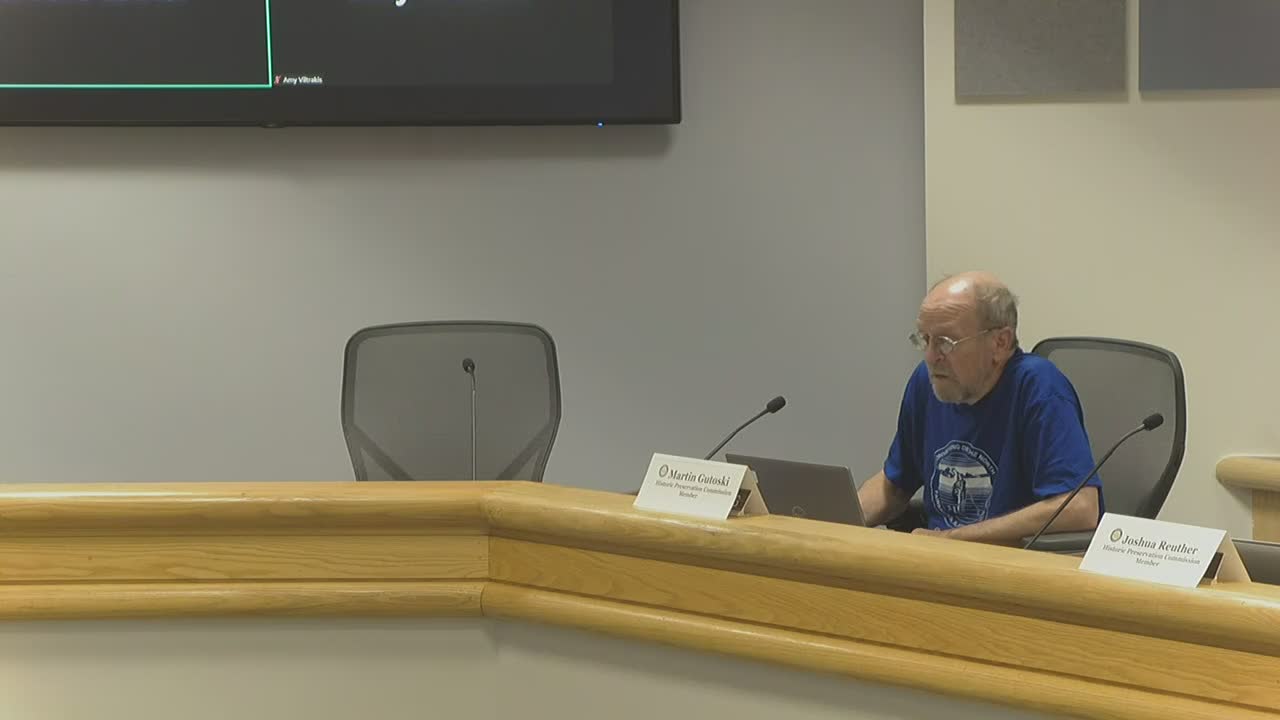Commission Discusses Demolition Plans for Engineer Hill Former Munitions Site
July 25, 2025 | Fairbanks North Star (Borough), Alaska
This article was created by AI summarizing key points discussed. AI makes mistakes, so for full details and context, please refer to the video of the full meeting. Please report any errors so we can fix them. Report an error »

In the heart of Fairbanks, Alaska, the Special Historic Preservation Commission convened on July 25, 2025, to address pressing matters surrounding the future of Engineer Hill, a site steeped in military history. As the meeting unfolded, the air was thick with anticipation and concern, particularly regarding the fate of five guard towers and Building 6122, remnants of a bygone era.
Commission members engaged in a thoughtful dialogue about the demolition of these structures, emphasizing the importance of documenting their historical significance before any action is taken. "The preferred alternative is to fully document the buildings and then demolish," clarified one member, underscoring the commission's commitment to preserving the past even as they make way for the future.
However, the conversation took a more serious turn when the potential hazards associated with the site were raised. One commissioner recalled the legacy of military installations, cautioning about the risks of residual hazardous materials left behind from previous uses as munitions sites. "There have been significant problems with military installations that changed hands from federal to private ownership," he noted, highlighting the need for careful consideration of environmental impacts.
While the commission acknowledged that these concerns fell outside the immediate scope of their project, they reassured attendees that an environmental assessment would address contamination issues. "We have a restoration team that addresses contaminated sites," a member stated, providing a glimmer of hope that safety measures are in place.
As discussions continued, the commission remained open to alternative mitigation plans, though none had been formally proposed at that time. The collaborative spirit was evident, with members encouraging feedback and suggestions from one another, fostering a sense of community involvement in the preservation process.
As the meeting drew to a close, the implications of their decisions loomed large. The fate of Engineer Hill not only reflects a commitment to historical preservation but also serves as a reminder of the complexities involved in managing sites with layered histories. The commission's work is far from over, and the community watches closely, eager to see how the past will shape the future of this significant location.
Commission members engaged in a thoughtful dialogue about the demolition of these structures, emphasizing the importance of documenting their historical significance before any action is taken. "The preferred alternative is to fully document the buildings and then demolish," clarified one member, underscoring the commission's commitment to preserving the past even as they make way for the future.
However, the conversation took a more serious turn when the potential hazards associated with the site were raised. One commissioner recalled the legacy of military installations, cautioning about the risks of residual hazardous materials left behind from previous uses as munitions sites. "There have been significant problems with military installations that changed hands from federal to private ownership," he noted, highlighting the need for careful consideration of environmental impacts.
While the commission acknowledged that these concerns fell outside the immediate scope of their project, they reassured attendees that an environmental assessment would address contamination issues. "We have a restoration team that addresses contaminated sites," a member stated, providing a glimmer of hope that safety measures are in place.
As discussions continued, the commission remained open to alternative mitigation plans, though none had been formally proposed at that time. The collaborative spirit was evident, with members encouraging feedback and suggestions from one another, fostering a sense of community involvement in the preservation process.
As the meeting drew to a close, the implications of their decisions loomed large. The fate of Engineer Hill not only reflects a commitment to historical preservation but also serves as a reminder of the complexities involved in managing sites with layered histories. The commission's work is far from over, and the community watches closely, eager to see how the past will shape the future of this significant location.
View full meeting
This article is based on a recent meeting—watch the full video and explore the complete transcript for deeper insights into the discussion.
View full meeting
